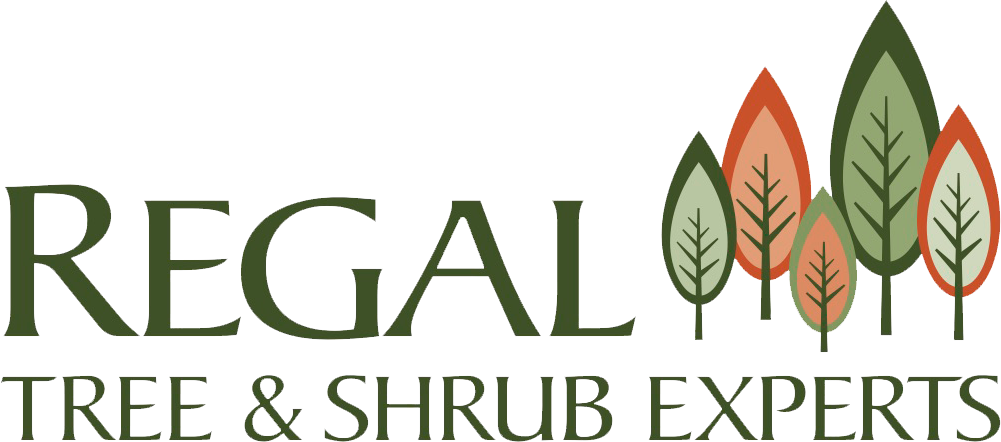INSECT & DISEASE CONTROL
Prevention and Treatment to Keep Trees Healthy
Call us Today 774-719-2450
What’s Bugging Your Trees?
Your trees are a vital part of your landscape, providing beauty, shade, and a sense of peace and tranquility. But like all living things, your trees are susceptible to pests and diseases that can compromise their health and vitality.
That's where we come in.
At Regal Tree and Shrub Experts, we understand the unique challenges Massachusetts trees face when it comes to pests and diseases. Our expert team is here to provide comprehensive and effective solutions to protect your trees and keep your landscape thriving.

The Regal Tree and Shrub Approach to Pest and Disease Control
Your Tree and Shrub Disease Experts
With years of experience serving the South Easton area and beyond, we have honed our skill in identifying and combatting the tree diseases that are prevalent in our region including:
Beech Leaf Disease – This disease is associated with the nematode Litylenchus crenatae and is identified by striping on leaf veins that appear during early spring leaf out.
White Pine Needlecast – Caused by the Canavirgella banfieldii fungus, this disease affects pine trees of the Pinus genus, resulting in a distinct - brown appearance by late summer.
Anthracnose – Not a single disease but a group of related fungal diseases that results in dark spots on leaves in addition to cankers appearing on twigs and stems.
Apple Scab – Another fungal disease, apple scab is caused by Venturia inaequalis and affects a variety of apple species. Signs of the disease brown to olive-green spots on both the leaves and fruits.
Diplodia Tip Blight – Caused by the Diplodia sapinea fungus, this disease affects several Pinus and non-Pinus tree hosts including the Douglas fir and several spruce species.
Oak Decline – Previously known as oak wilt, oak decline is a complex condition with multiple agents, both biological and environmental, bringing about serious health decline in oaks.
This is by no means an exhaustive list of diseases that can threaten your Massachusetts trees! Our team of certified arborists combines deep knowledge with state-of-the-art techniques to diagnose any tree disease and to ensure that your trees receive the best possible care.

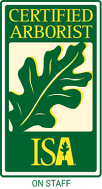
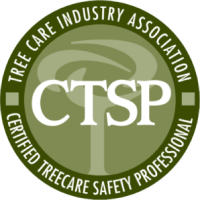
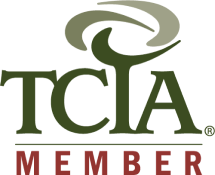
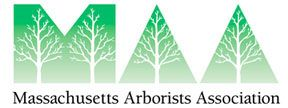


Tree Diseases – Know the Signs
Early detection is key to preventing the spread of tree diseases. Keep an eye out for signs such as:
Discolored or wilting leaves
Unusual growths or spots on the bark
Premature leaf drop
Brittle or decaying wood
Spots on leaves
Leaves with burnt or crispy looking edges
If you notice any of these symptoms, don't wait – request an inspection by calling 774-719-2450.
We’re Your Invasive Pest Specialists
An invasive pest is a pest that is introduced – accidentally or intentionally – from its native environment to a new location.
Invasive pests create major issues for your trees and shrubs for a few different reasons, including:
Lack of Natural Predators - Invasive pests enter new ecosystems where native predators don't recognize them as food sources or don't effectively limit their populations.
Resistance - Invaders have not evolved alongside native trees, so local trees lack natural defenses against the new pests.
Rapid Reproduction - Freed from the constraints of predators and competition, invasives can quickly breed to large numbers.
Detection Challenges - Inspections can miss unfamiliar invasive insects until populations have exploded.
Limited Management Experience - There are fewer existing integrated management plans for invasive species than there are for native pests. Figuring out control takes time.

What to Expect When You Hire Regal for Pest and Disease Control
Customized treatment plans
Certified applicators
Environmentally-friendly solutions
>A commitment to integrity
The best solution, not the most expensive solution
Timely interventions for fast action
Expert advice from start to finish
Continued monitoring and maintenance
We can also help you control ticks and mosquitoes! Learn more here!
How We Battle Invasive Pests
There are a few invasive pest species that have become a major problem in Massachusetts. Fortunately, we’ve got the skill and experience to control them effectively.
Check out a few of the invasives we battle!
Emerald Ash Borer
The Emerald Ash Borer (EAB) is a flying insect whose larvae feed on Ash trees. These invasive beetles’ larvae bore through the underside of the bark, where they mature before exiting the trees and feeding on the leaves. They can fly long distances to seek out new host trees and are lethal!
Spring treatment with a systemic product from May to June is best. This strategy kills the larvae as they feed before they turn into adults. This also helps prevent infestation by killing any adults that may feed on the tree's leaves. We apply our products to the bark, which means our treatments act quickly while focusing the application on the problem, essentially eliminating accidental drift!
Spotted Lantern Fly
Spotted Lanternfly (SLF) is a pest making its way through the Northeast United States. Though these pests are quite colorful and nice looking, don’t be fooled! You DO NOT want these pests near your trees.
SLF feeds on dozens of tree and shrub species by piercing a hole into stems and sucking out the sap leading to stem decline and dieback.
Applying a systemic treatment to the trunk of an infested tree is the best method of control. We time our treatments between June and September are best since these months are prime feeding times for SLF.
The spraying of pesticide-free horticultural oils in late winter to early spring helps eradicate its eggs, as well. Annual treatments are suggested until there are no longer any visible signs of infestation.
Asian Longhorn Beetle
Asian Longhorn Beetle (ALB) is a wood-boring insect that made its way to America by hitching a ride on wooden freight pallets from China. This beetle lays its eggs in the notches they chew into the bark of a host tree. After hatching, the larvae tunnel into the wood, eating as they go. After maturing, they exit the tree through a dime-sized hole. Their range of host trees is broad, but they most often attack trees like maple, birch, elm and ash trees.
The damage Asian longhorn beetles cause is extensive, and irreversible, and once the infestation becomes noticeable, it’s too late to save the tree. The USDA and MDAR require the tree to be removed and destroyed, stump and all!
Fortunately, preventive measures can be taken by infusing a systemic pesticide into the trunks of potential host trees. When this is done, any feeding ALB larvae will die once they ingest the pesticide-treated wood.
Serving Bristol, Norfolk, Middlesex, and Plymouth counties, Massachusetts, and Providence County, Rhode Island
Did You Know?
There are over 70 different tree pathogens in Massachusetts that cause conditions such as blight, needlecast, cankers, shoot blight, anthracnose, leaf spots, rust, wilt, and more That’s a lot!
Frequently Asked Questions
An invasive pest is a species that has been introduced to an area - accidentally or intentionally - where it didn't live before.
Invasive pests are especially tricky to deal with since most of the trees and shrubs they attack do not have any natural defenses to resist them, and the introduced pests may not have any natural predators in their new home.
Fortunately, we are well equipped with both the knowledge and skill to control invasive pests in the greater South Easton area. We even have an entomologist on staff!
Yes. Massachusetts and Rhode Island take pesticide compliance very seriously and require any company that offers commercial pest control to be a certified applicator.
This certification is only given to individuals who pass an extensive exam covering the safe and efficient use of pest control products and knowledge of the pest species they control.
The symptoms of a tree disease and a condition brought on by environmental factors or deficiencies can often look similar.
Our tree experts have extensive training on all types of tree conditions and diseases, so they will be able to assess any tree and tell you what the issue is.
The best way to prevent pest issues is by keeping your trees healthy. A healthy tree is better equipped to deal with pests and any adverse effects they cause.
Proper watering, nutrition, regular pruning, and monitoring for pest activity are some of the best things you can do to increase the chances of your trees staying healthy when threatened by pests.
Need help? Call us at 774-719-2450 today and let our experts keep your trees pest and disease-free!
Trees can become victims of pests and disease at any time, but the warmer months are generally the prime time to experience pest and disease issues since this is the time of year they are most active.
That said, a tree can suffer the effects of a pest infestation or disease at any time, so keeping your trees healthy and regularly inspecting them for issues is a good practice no matter what time of year.

